
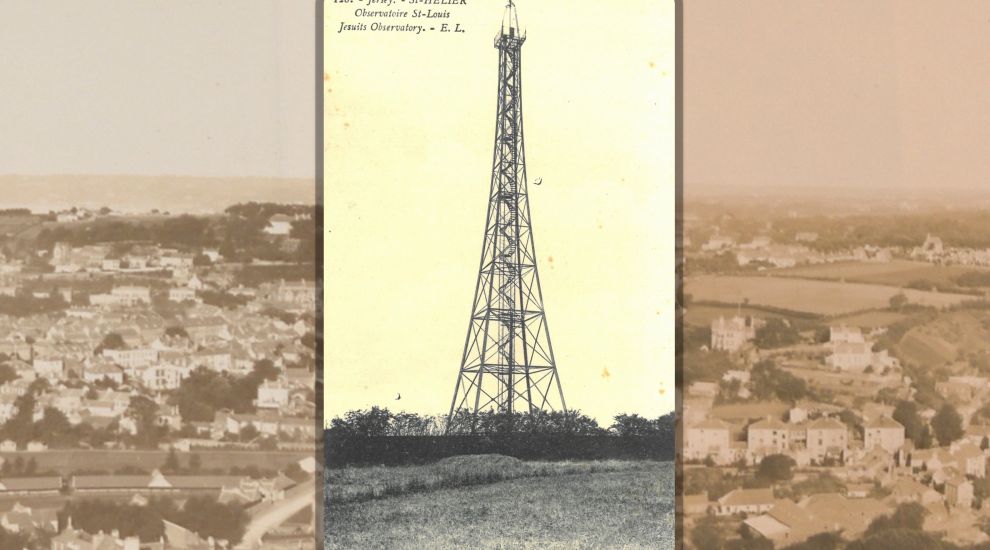

Historians look back on how a 'mini Eiffel Tower', which confused and amused islanders of the 1800s, paved the way for recording Jersey's hottest ever day earlier this week.
The weather has a big effect on day-to-day life and has been on everyone’s minds recently, with record-breaking high temperatures in the island.
These days, we can easily discover how hot or cold it’s been but this information wasn’t always available.
It was in 1894 that official temperatures began to be recorded.
Late that year, a great structure just outside of St. Helier started to appear. People were struck by what they thought looked like a mini Eiffel Tower.
However, the building had an altogether more practical application – a weather observation tower.
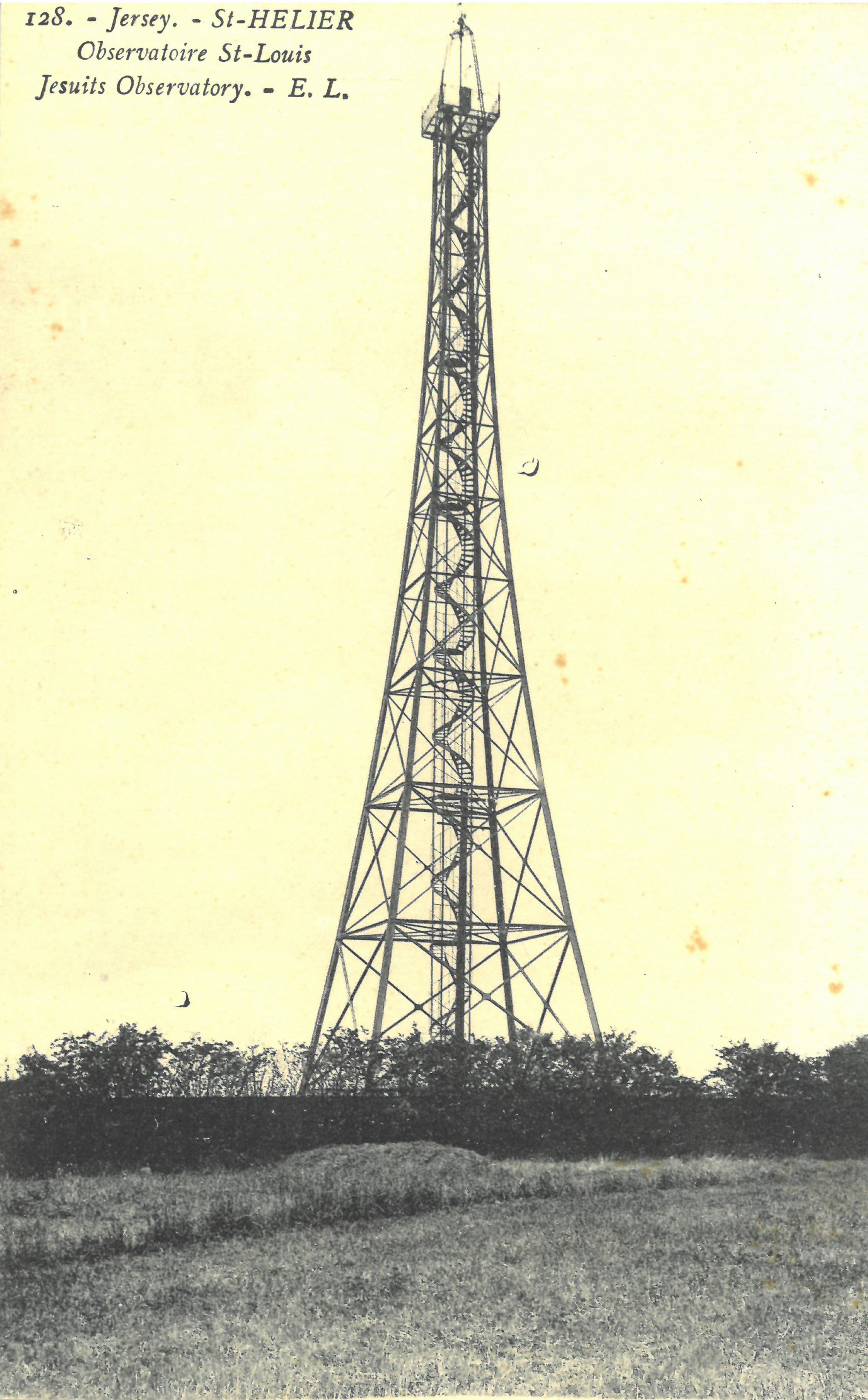
Pictured: A postcard of the tower.
The tower was run by Jesuits, who had come to the Island after new anti-religious laws were introduced to France in the 1880s, which in turn had led to Jesuits leaving the country.
They investigated setting up an enclave in Jersey and found a home at the Imperial Hotel, now the Hotel de France.
The property was bought by the Jesuit fathers of the English province, and leased to their French brethren, who were unable to purchase land in Jersey as they were foreigners.
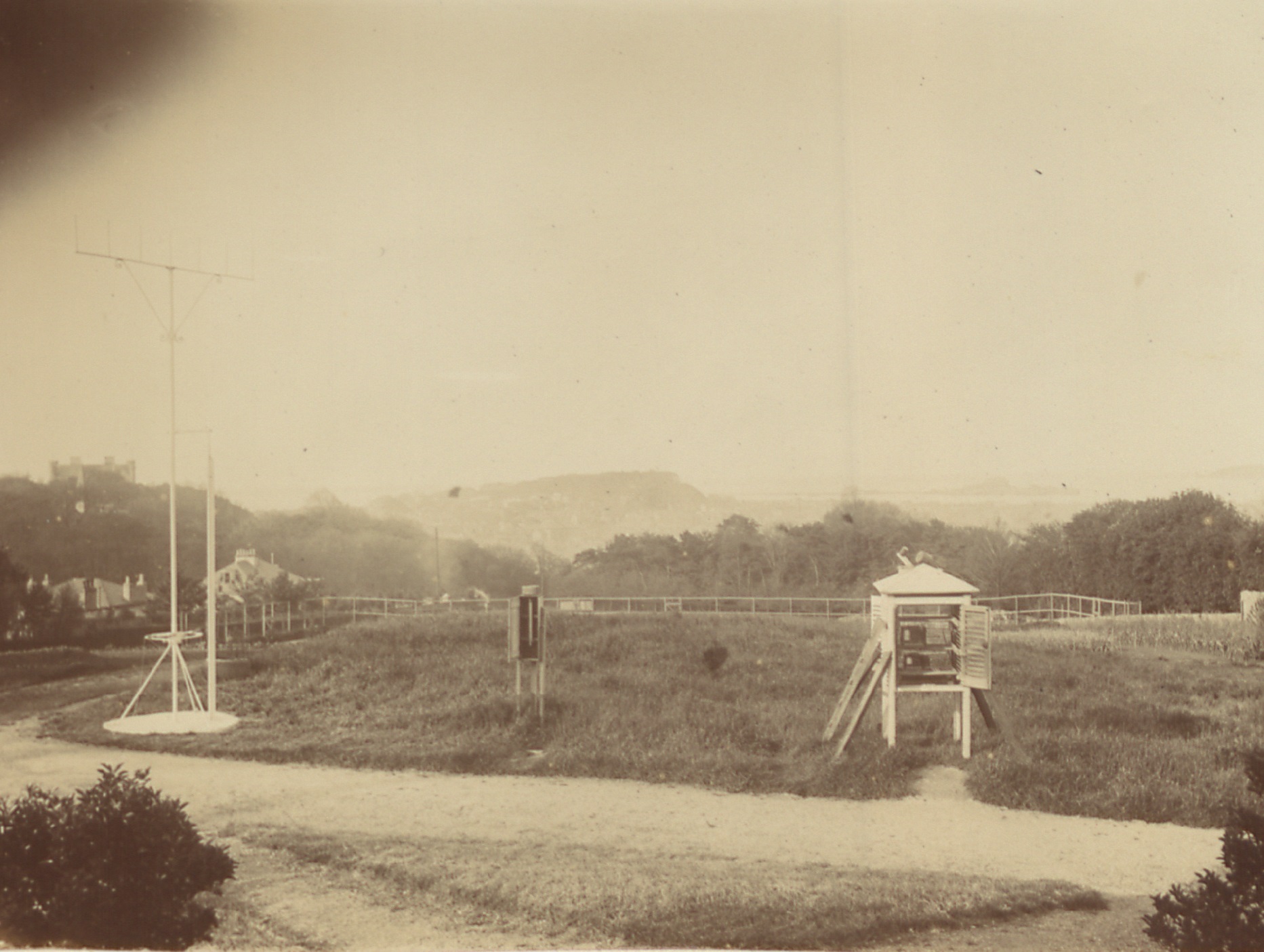
Pictured: Meterological instruments at the Observatory.
Despite some locals’ misgivings the property soon became a centre of learning and the Jesuits were accepted into island life.
In 1893, Father Marc Antoine Dechevrens arrived in the island. He was born in Switzerland and had served in various missions around the world.
At a previous appointment in China, he had served as the Director of the world famous Zi-Ka-Wei Weather Observatory, in Shanghai.
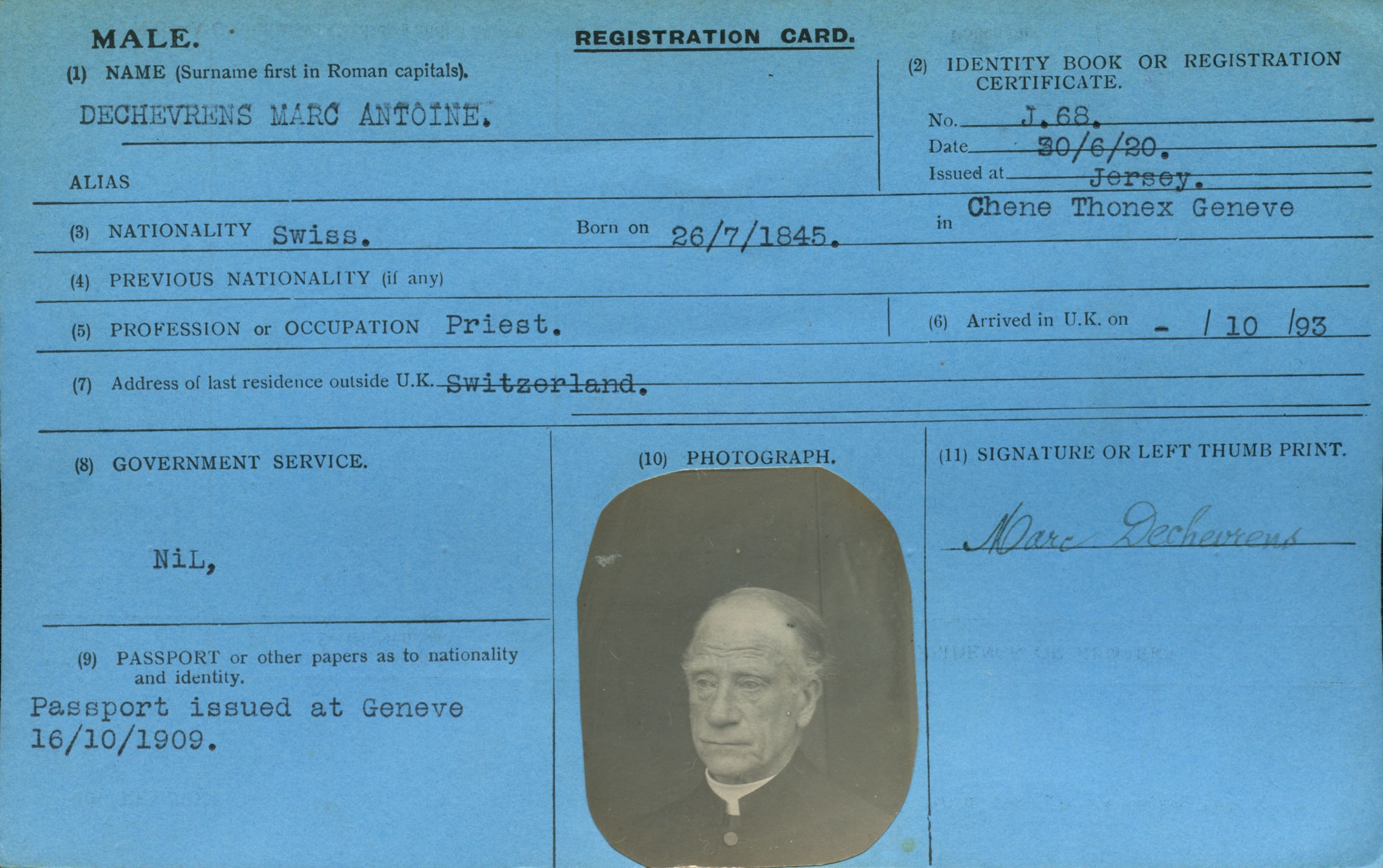
Pictured: The registration card of Father Dechevrens.
Once he was in the Island, he was determined to advance the purposes of meteorological observations.
A note appears in the Jersey Weekly Press and Independent in January 1894 from Father Noury that going forward Father Dechevrens was going to take over sending the newspaper observations every month and that they would have more detail than ever before.
Dechevrens wanted to develop a site and equipment so that he was able to record the weather more effectively.
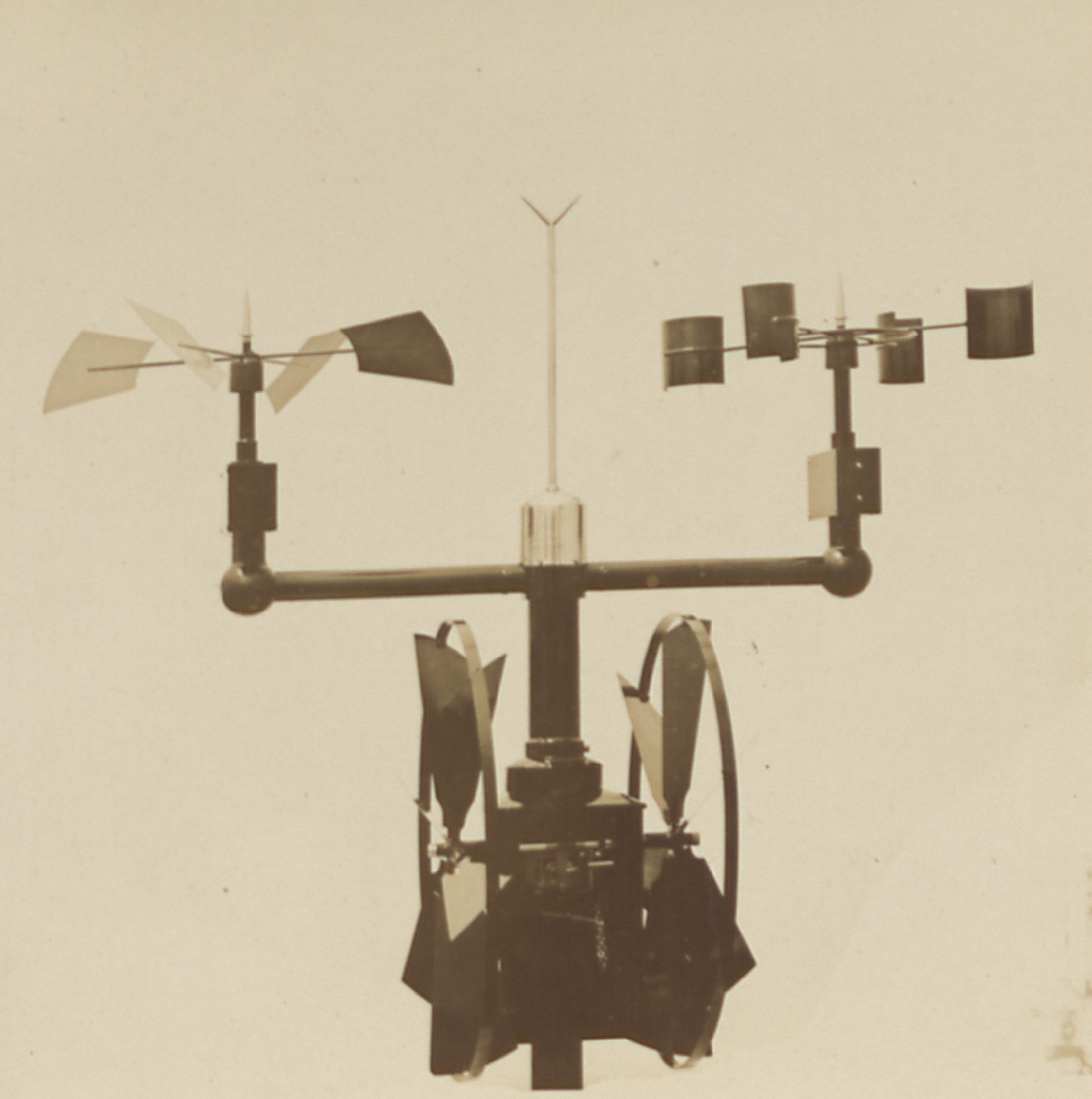
Pictured: A purpose-built anemometer created by Dechevrens, placed at the top of the tower.
With this in mind, he suggested that an observatory should be built in the grounds of Maison St. Louis.
He planned to equip it with purpose-built equipment and take as many weather readings as possible.
In addition to this, he advocated for the construction of a meteorological observation tower to be built next to it.
It was this that islanders started to see taking shape at the end of 1894.
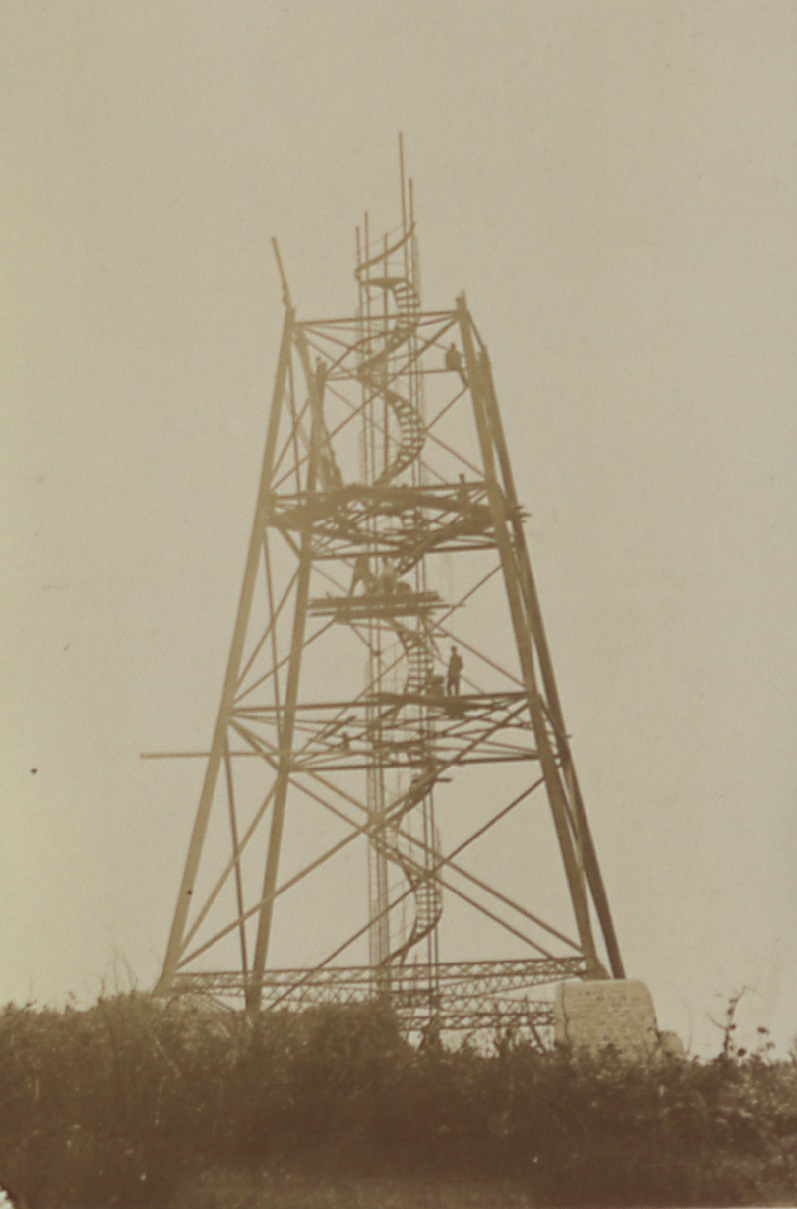
Pictured: The tower under construction on 11th October, 1894.
It took a mere month to build and was completed on 6 November.
After some research and in-depth discussion with various firms in the UK and the Continent, Théophile Seyrig, an engineer based in Belgium, was engaged to design the construction.
Ironically, given the fact that islanders thought that the building looked like a mini Eiffel Tower, Seyrig had actually worked with Gustave Eiffel earlier in his career!
The structure was to stand 50 metres high, on four stone pillars, which would be buried four metres underground in order to support it.
The construction weighed almost 40 tons and was put together in sections in Belgium before being shipped to the Island from Antwerp.
The masonry work was carried out by local contractor Samuel Cuzner, who also built the observatory, with a specialist team coming over from Belgium to complete the construction of the metal tower.
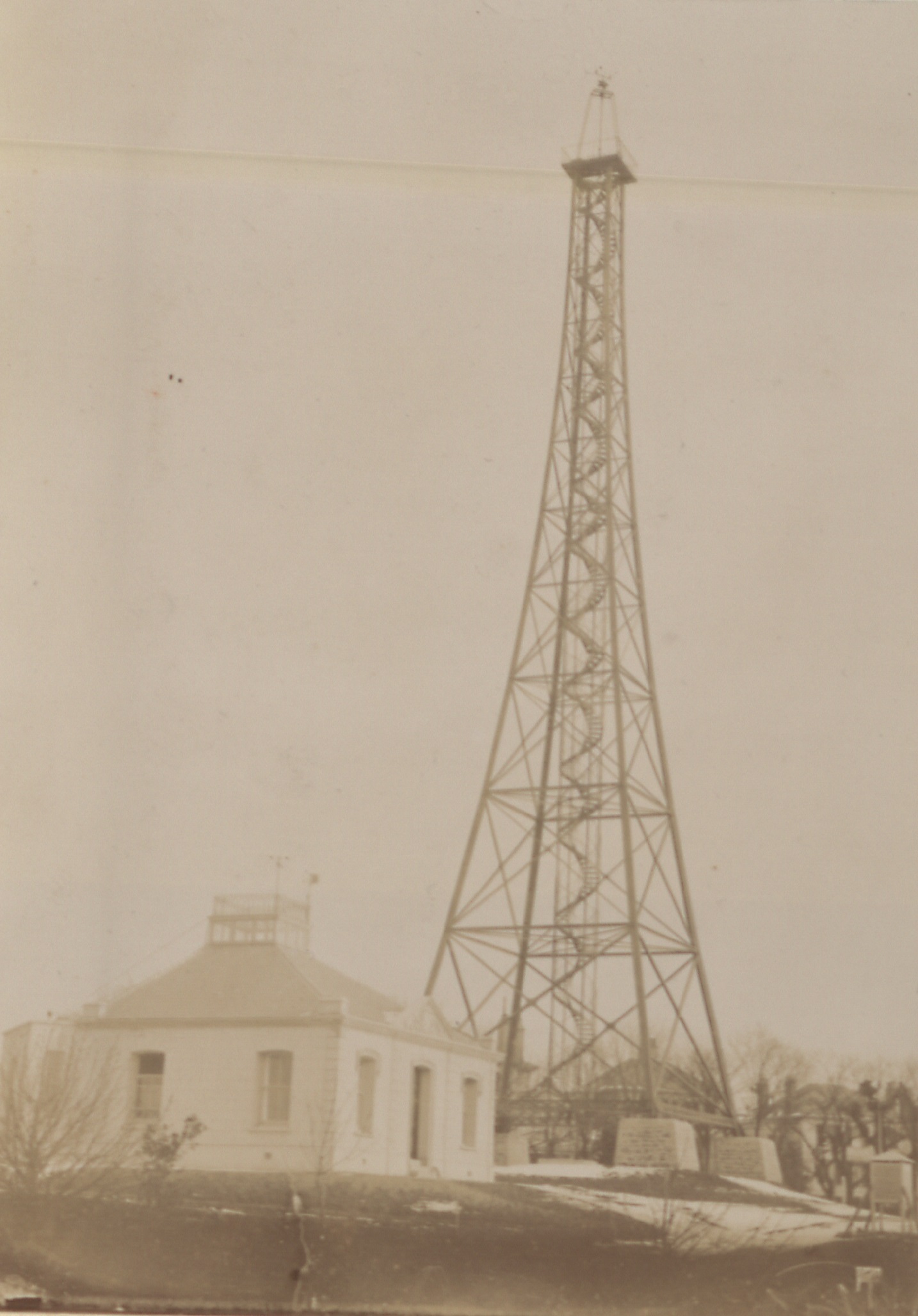
Pictured: The observatory and tower.
At the time, the local press wrote excitedly of the work. The Nouvelle Chronique commented on 24 October: “We are told that when the tower is completed it will be possible to see what is taking place in the armoury of Fort Regent.
"We wonder how the army feels about the prospect of prying eyes noting their movement."
The Jersey Weekly Press and Independent paid tribute to Dechevrens and the Jesuits on the tower’s completion noting: “But we have, we feel certain, said enough to prove what a debit of gratitude, past and present as well as prospective, the Island owes not only to Père Dechevrens personally for his painstaking researches, but to the Jesuit brotherhood for erecting so complete an observatory in our midst.
"...We cannot conclude, however, without sincerely wishing Père Dechevrens long life in his useful career, for we feel certain that under his masterly direction the St Louis’ Observatory will soon be known as far and wide as even the name and fame of our Island itself.”
CLICK TO ENLARGE: A view from the top of the tower.
Dechevrens continued his studies for the next few decades, until his death in 1923.
His legacy endured with the continuing work of Père Christian Burdo and Père Charles Rey in the following years.
On 19 February 1929, after becoming increasingly dilapidated, the tower was dismantled.
The Evening Post reported that an initial attempt to remove it had been made the previous day without success but new cuts were made to the legs, which allowed it to be pulled down. This led to the end of “one of the finest landmarks the island possessed”.
The metal was shipped to England and sold for scrap.
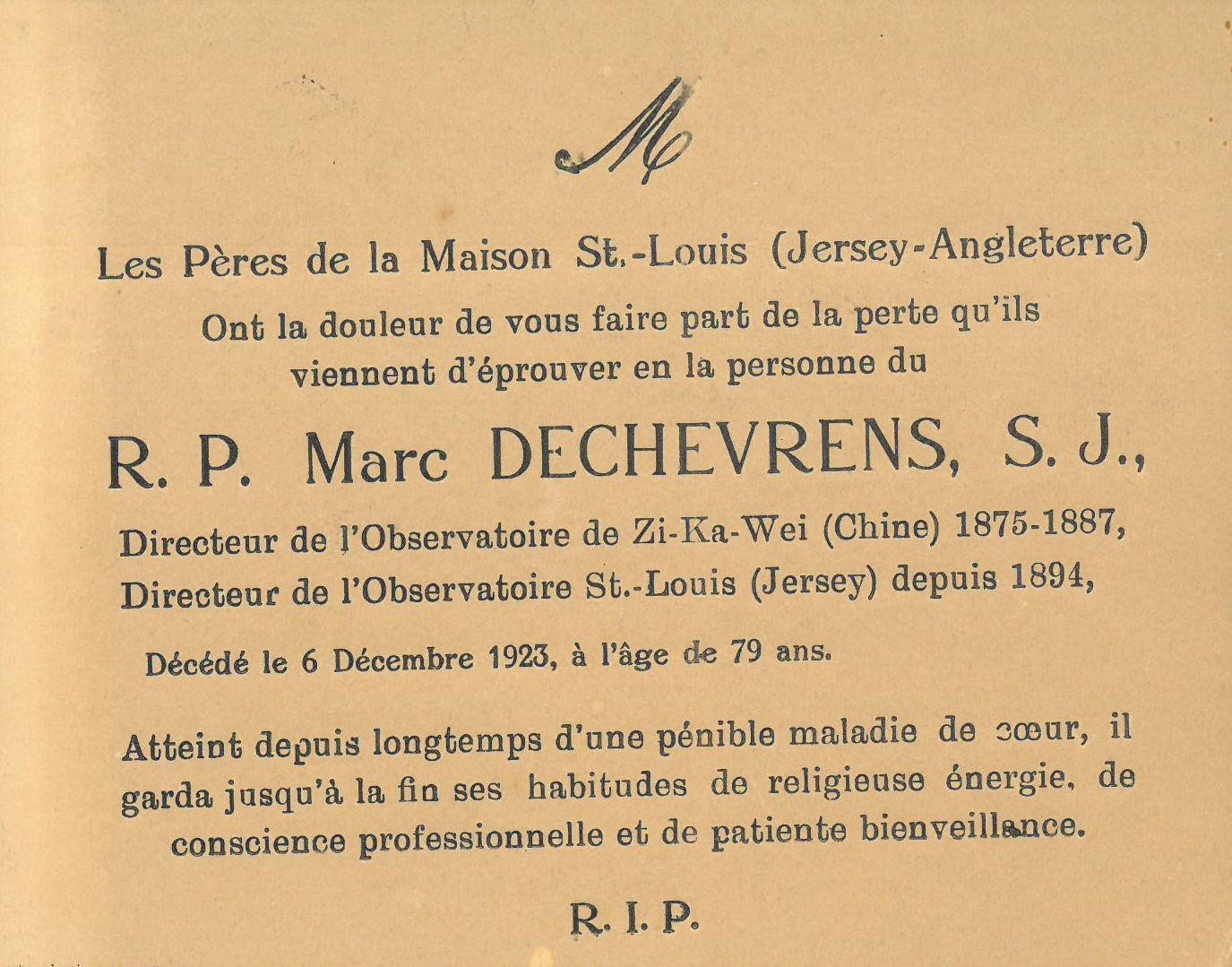
Pictured: The death notice of Father Dechevrens
The States of Jersey had been offered the tower on condition they paid the costs for repair, but they turned down this offer.
However, the weather station remained, with the States eventually buying it in 1974 and continuing to take weather readings.
Its lengthy service was recognised formally in 2020 by the World Meteorological Organisation, a fitting testament to those meteorological innovators.
This story was told as part of a series in collaboration with Jersey Heritage.
To uncover more stories like this, visit Jersey Archive or search its online catalogue HERE.
Comments
Comments on this story express the views of the commentator only, not Bailiwick Publishing. We are unable to guarantee the accuracy of any of those comments.